Ards North Long Sea Outfall (2023)
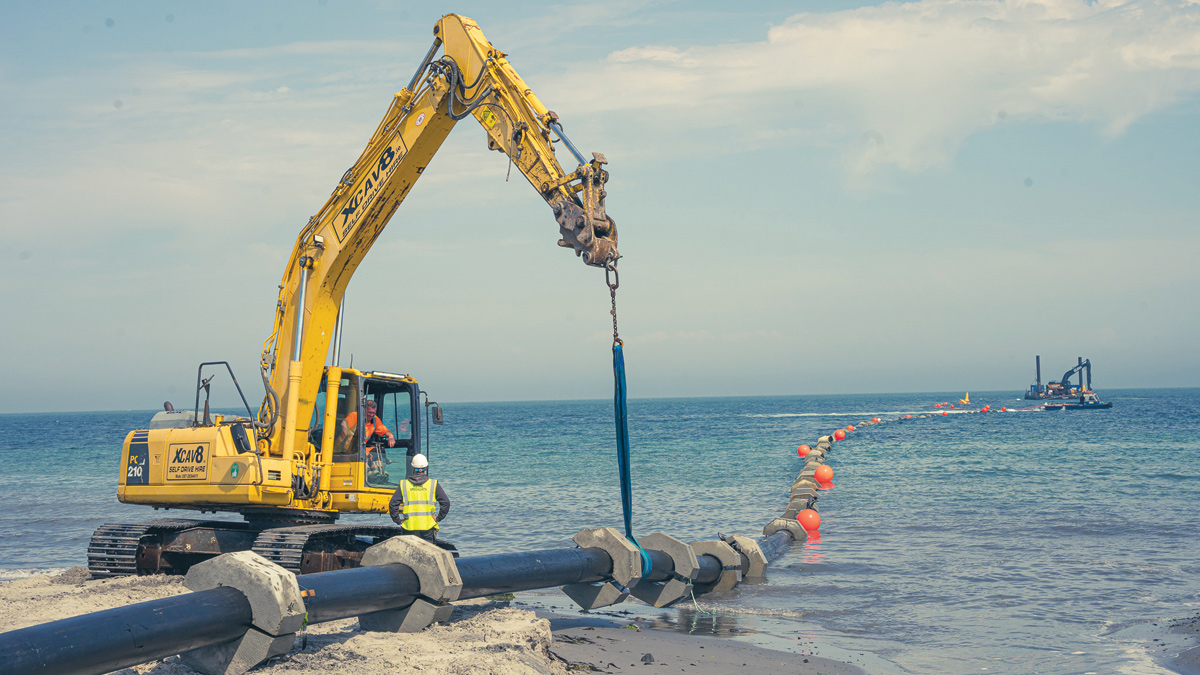
Ards North Outfall tow and sink operation - Courtesy of NI Water
The Ards North Long Sea Outfall, constructed at Ballyferris on the east coast of the Ards Peninsula, has an asset design life of 60 years and can convey flows of up to 4200 m3/day of treated effluent from the Ards North WwTW to the pre-determined deep water discharge point in the Irish Sea. Legislative compliance was demonstrated by computational and hydrodynamic effluent dispersion modelling and the termination point for the outfall was at a pre-agreed location 500m offshore. The treated effluent is dispersed and diluted through a multiple port diffuser in 4m depth of seawater.
Ards North WwTW
The Ards North WwTW catchment is seasonal with significant summer peaks in flow generated by holiday parks. In addition, the initial contract documents required a long sea outfall to be designed for storm tank overflows. This resulted in a significant range of design flows and challenges to achieve an asset standard compliant hydraulic design.
Flows ranged from:
- Minimum flow rate (Winter DWF): 13 l/s
- FFT Ards North WwTW: 48.22 l/s
- Maximum flow rate (Formula A at WwTW): 74 l/s
Given the range of flows, the exemplar design included a pressurised outfall fed from a header tank and final effluent pumping station.
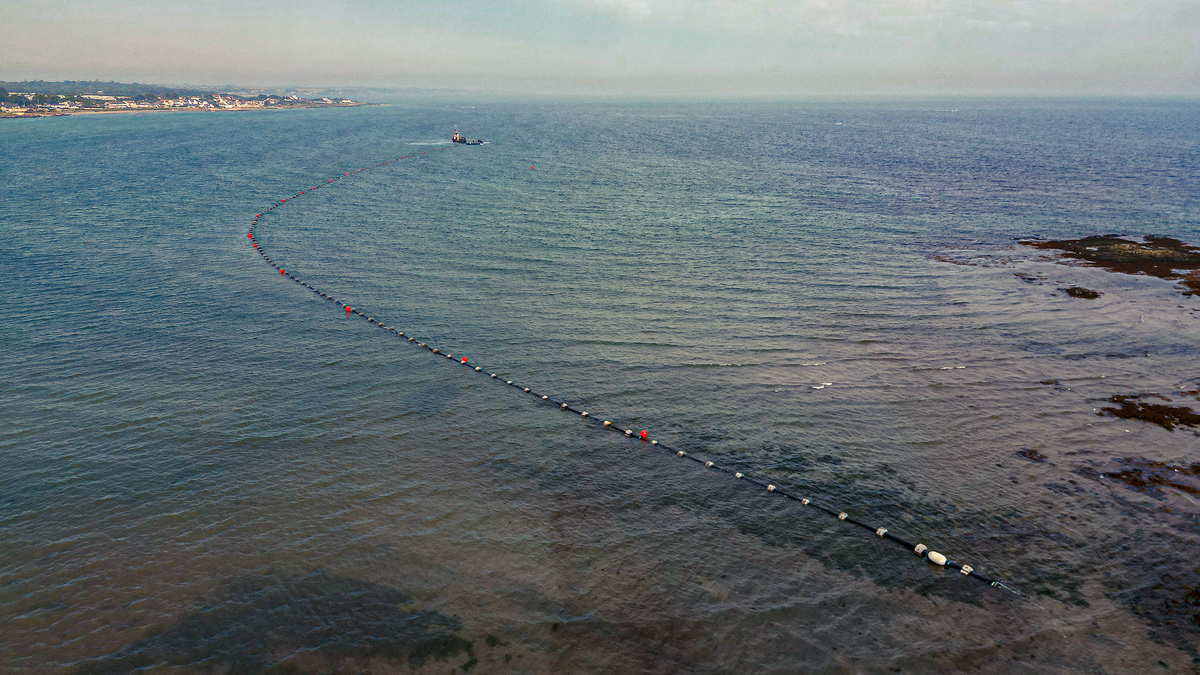
Tow and sink operation – Courtesy of NI Water
Exemplar design
Farrans Construction along with RPS Consulting Engineers were appointed to develop the exemplar design for construction.
The completed design evolved during the design period with initial designs providing capacity for the full range of flows. On award, RPS completed a pipeline route assessment using Civil 3D ground models to review the option of providing a gravity solution capable of delivering the full range of design flows through the outfall to the diffuser against 1:100-year storm conditions with an appropriate allowance for sea level rise to 2030.
RPS Water Environment & Marine completed an assessment of the tidal range and sea level rise to develop a maximum tidal discharge level. Admiralty Tide Tables for the secondary ports of Donaghadee and Portavogie were used, and linear interpolation of the Highest Astronomical Tide (HAT) and Mean Low Water Spring (MLWS) levels provided tidal levels. Sea level rise due to climate change was assessed using derived data through UKCIP18, providing a tidal range of +3.64 to -1.91m AOD Belfast which was adopted for the design process.
Hydraulic analysis
Ground modelling and initial hydraulic analysis confirmed that any gravity solution would require significant depths of excavation on the land-based section, and it was concluded that a pressurised system using a header tank was the preferred solution reducing the depth of dig, associated costs, health and safety risks during construction, and whole life operation and maintenance of the asset. Potential pipeline routes were identified and appraised to establish the best option considering lands access, road opening, future maintenance to fittings and furniture, ground conditions and depth of dig. The preferred option was a route across agricultural land, local roads before passing through a caravan holiday park to the high-water mark where the land and marine-based sections of the outfall would join.
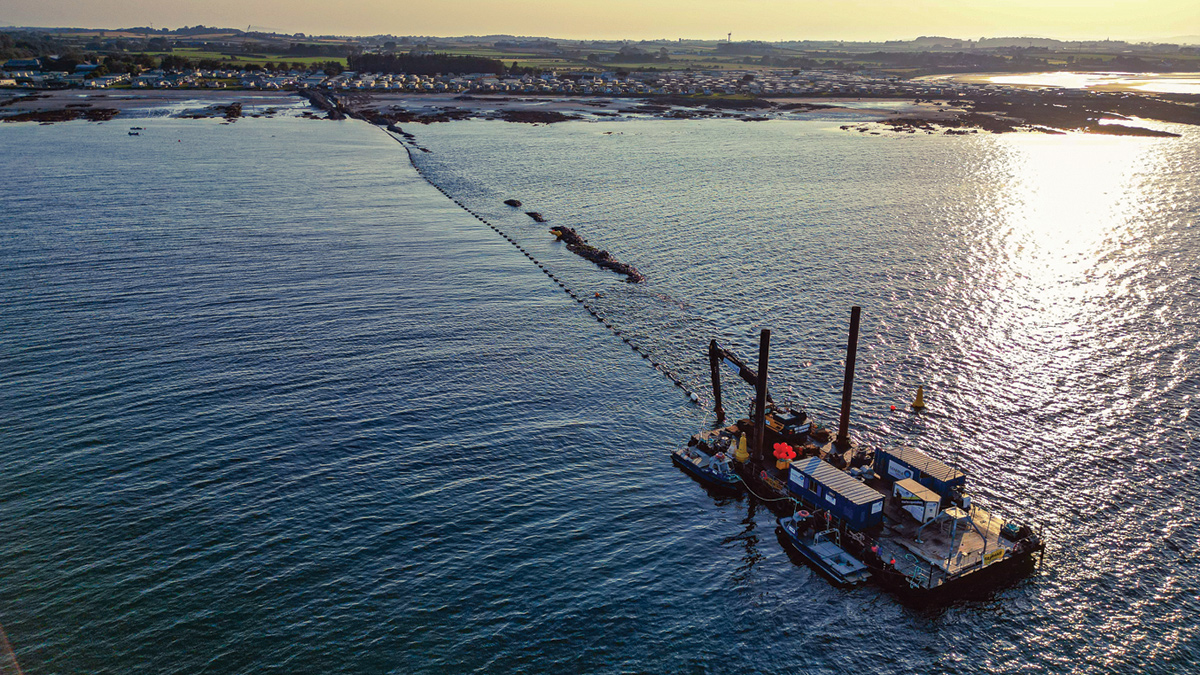
Aligning pipeline over pre-dredged trench – Courtesy of NI Water
A range of pipeline diameters and materials were considered to achieve optimum velocities, a balance between pipe diameter and TWL in the proposed header tank. PE pipes were selected for the outfall with varying SR ratings used to offer material cost savings using only higher rated pipes for the marine sections to take account of installation (towing and sinking) stresses on the system.
Specialist hydraulic modelling was then completed by Hydraulic Analysis Limited (HAL) to provide confidence in the performance of the system against all combinations of design flows and tidal levels. The analysis confirmed the pipe diameter selection, siting of air and scour valves and provided specific specifications for pipeline gradients, bends and air valves installation to ensure stable free surface flow conditions were achieved within the mains gravity driven sections.
Renegotiated WOC
During the detailed design stage, a renegotiation of the Water Order Consent (WOC) allowed for discharge of storm flows from the Ards North WwTW direct to an adjacent watercourse. This significantly reduced the maximum design flow for the long sea outfall and on reassessment allowed the removal of the effluent pumping station and header tank offering significant operational savings for NI Water.
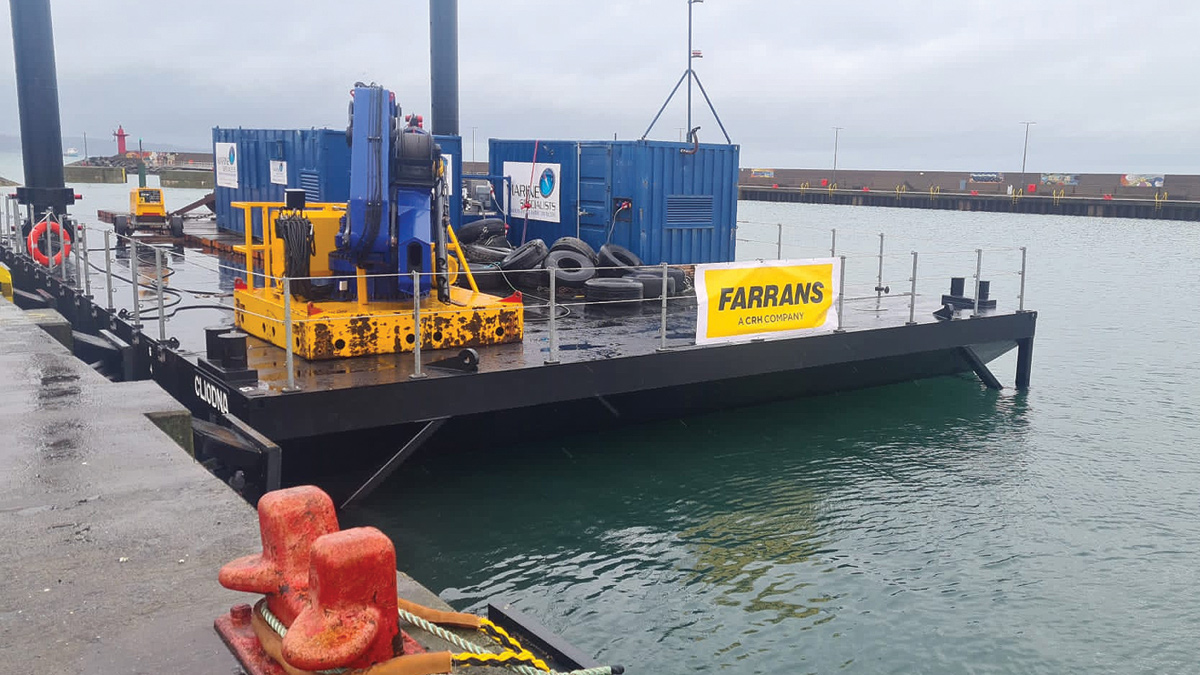
Barge mobilisation from Bangor Marina – Courtesy of Farrans
The final solution was therefore to discharge treated effluent directly from the sample chamber to a gravity outfall which acts in part as a pressurised system. This amendment to the design approach was verified by HAL and removal of the pumping station and header tank was agreed by all prior to finalising the construction details including:
- Design of pipeline bedding and surround for both land and marine-based works.
- Land-based pipelines were designed as traditional open-cut installations with bedding and surround specified to meet the requirements of BS EN 1295-1:2019 Structural Design of Buried Pipelines.
- Air, scour and hatchbox chamber details for the land-based section. Given the variation in summer and winter dry weather flows, the inclusion of hatch boxes was provided for maintenance and to aid cleaning of the outfall.
- Marine section bedding and surround. The marine section was considered as two sections namely:
- Inter-tidal zone where the pipeline was bedded in suitable granular bedding and surround and installed with collars and kennels for flotation resistance and stability. The pipeline was protected with 2 layers of rock armour.
- Offshore zone where the pipeline was installed in a deeper pre-dredged trench with an imported granular bed and surround and restrained against flotation using kennels at 3m centres. This section of the pipeline was backfilled with as-dug excavated rock.
- The outfall was completed with a collar and kennel arrangement and a 4-port crosshead diffuser, fabricated from 400mm OD PE pipework and fitted with four 150mm diameter Tideflex non-return valves. The diffuser arrangement is protected by a galvanised steel frame with sacrificial anodes.
Design for construction complied with the requirements of the NI Water Asset Standards and Specifications, CESWI, Relevant CIRIA Guidance and other Industry accepted standards.
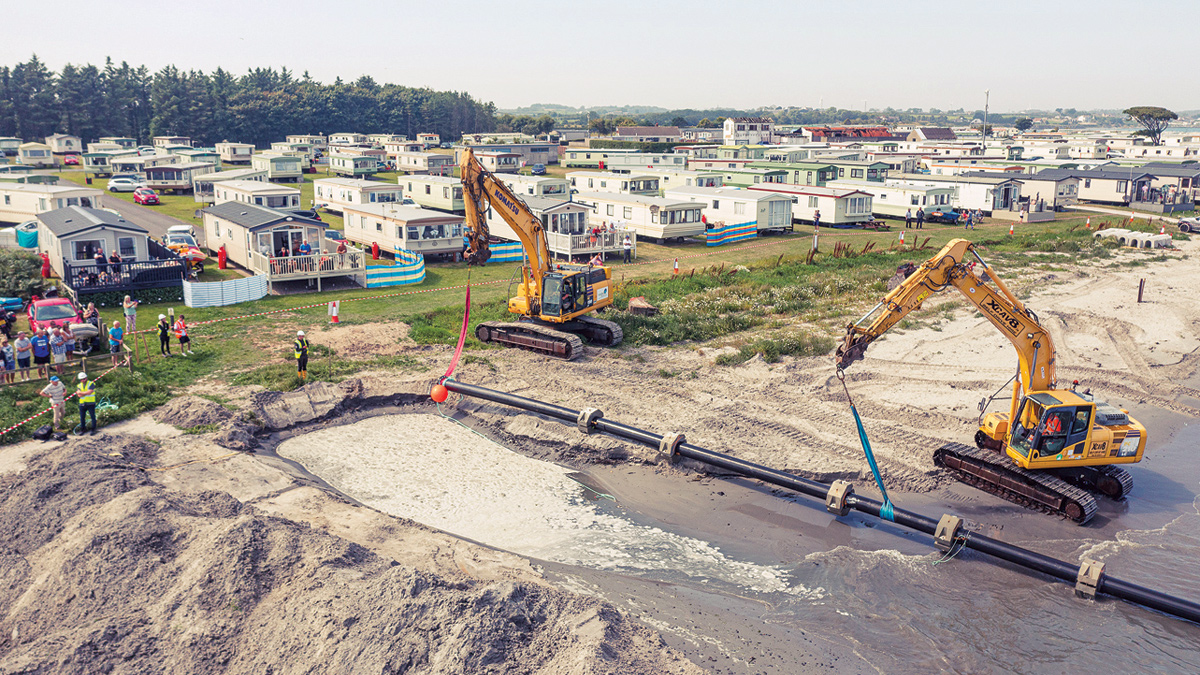
The outfall was installed off the coast at Ballyferris adjacent to a caravan park – Courtesy of NI Water
Undertakings
Farrans Construction was appointed as principal designer and contractor for the works, including an early contractor involvement stage consisting of scope and design development, stakeholder engagements, statutory approvals and ground investigations. Farrans appointed Marine Specialists Ltd, a specialist subcontractor, to assist in completing these works.
Ards North LSO: Supply chain – key participants
- Client: NI Water
- Principal designer/contractor: Farrans Construction
- Project management/technical support: Tetra Tech
- Exemplar design: RPS Consulting Engineers
- Hydraulic modelling: Hydraulic Analysis Ltd
- Specialist marine subcontractor: Marine Specialists Ltd
- PE pipe & fittings: Associated Pipeline Products
- Precast concrete collars: Ardmore Precast
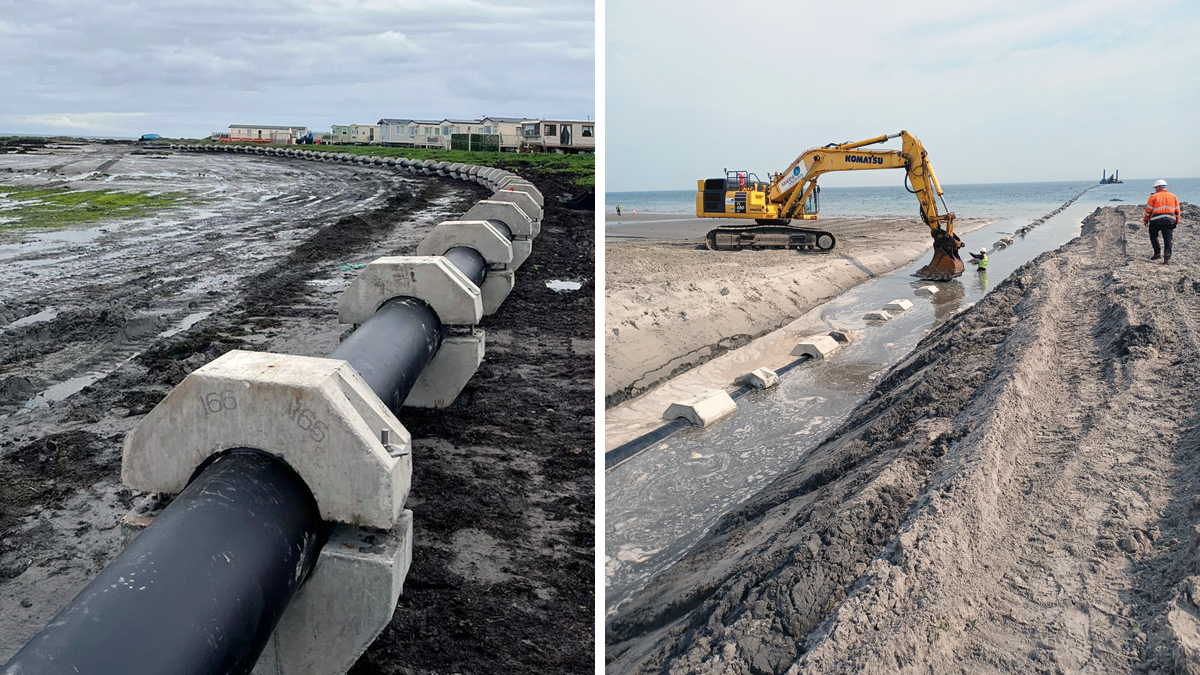
(left) Onshore pipeline assembly – Courtesy of Farrans, and (right) installation of concrete kennels – Courtesy of NI Water
Installation
The primary method of installation was by open-cut trench and rock breaking technique with contingency arrangements in place for encountering ‘unbreakable’ materials, consisting of a drill, blast, dig methodology.
The works were completed in the following phases:
- Phase 1: Works comprised shore-based operations to prove the trench to depth along the intertidal zone, consisting of rock breaking, excavation and temporary backfilling of the trench. This phase was designed to mitigate the risk of delay due to adverse weather conditions and capitalised on large spring tides by utilising land-based equipment during the winter months. It would also minimise the disruption to the public by reducing the duration of pipeline installation and final connection on the beach.
- Phase 2: This involved the marine-based operations, rock breaking and excavation of the trench proven to depth with the use of a barge-based 60t 360° track excavator with a 14m reach, Topcon 3D GPS system, 4t breaker and ripper tooth. The excavator operated from a pontoon barge 26.8m x 12.2m with a deck capacity of 360t.
- Phase 3: This phase included a combination of both shore and marine-based operations. The trenching extended seaward in accordance with the limiting conditions for weather, visibility, sea state, wind and gusts. The position, alignment and depth of the trench were confirmed by the 3D GPS systems and regular bathymetric surveys.
The pipeline
The pipe lengths (supplied by Associated Pipeline Products) were butt fusion welded, prefabricated to a string length of 500m, fitted with concrete collars (ballast weights) and tested. At the ends of the pipe string, a pupped stub was welded complete with stainless steel backing rings.
A blank flange was bolted to the stub/backing ring to allow for the entrapment of air within the pipeline allowing the pipeline to float when placed in the water.
Shore-based excavation work was completed at low tide to re-excavate the trench along the intertidal zone previously proven in phase 1 of the works in preparation for pipe tow-and-sink operation.
Once the trench was proven to depth and prepared for pipeline installation, the pipe string was gradually moved toward the water using land-based excavators.
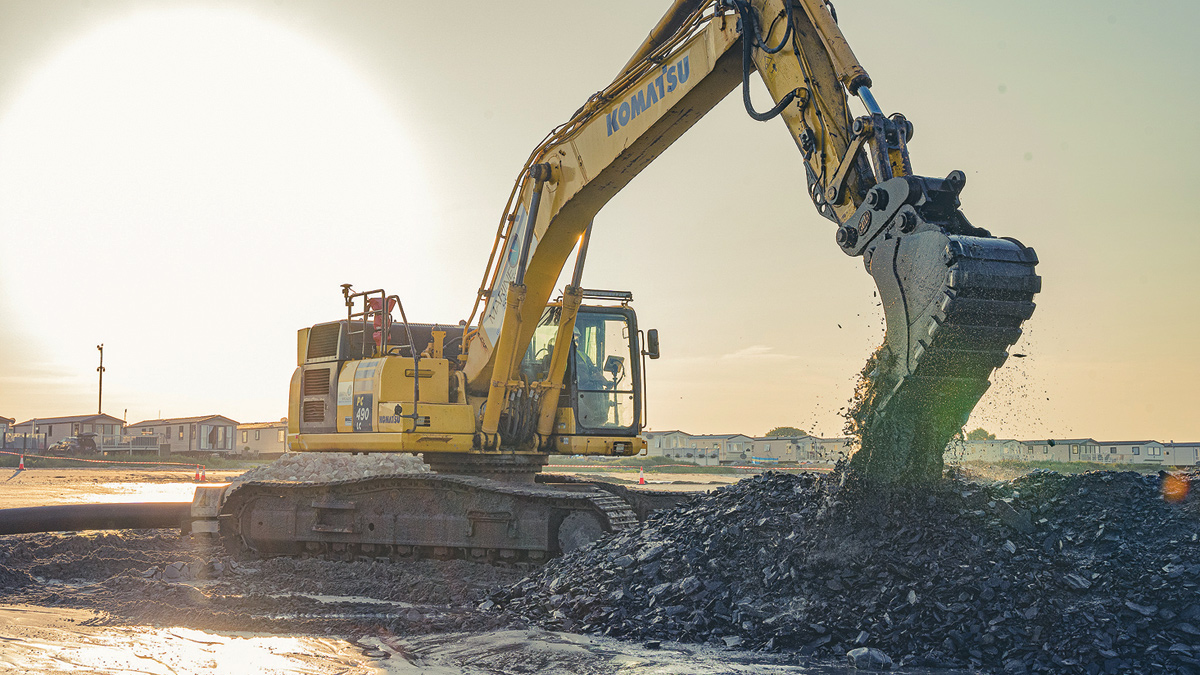
Re-excavating the proven trench – Courtesy of Farrans
At high tide, the pipe was floated, towed and positioned above the pre-dredged trench. Connection was made to the pre-installed land section of the outfall and the pipe was filled with water allowing a gradual sinking and pipe placement along the trench. Backfilling operations commenced once the pipe was surveyed and verified.
Professionally qualified divers installed the prefabricated diffuser head. Live underwater video surveys were conducted to monitor the installation of all equipment.
The execution of these activities adhered to stringent health and safety protocols, strict environmental considerations, and project timelines, ensuring the successful completion of the project on time and within budget.
Community liaison
Safety was at the heart of the project and protecting the public while works were ongoing on the beach, in close proximity to a holiday park was paramount. NI Water and Farrans undertook a range of initiatives to ensure that local holidaymakers, residents and the wider public were aware of the planned installation, including leaflet drops, beach signage, posters and importantly a children’s safety art competition.
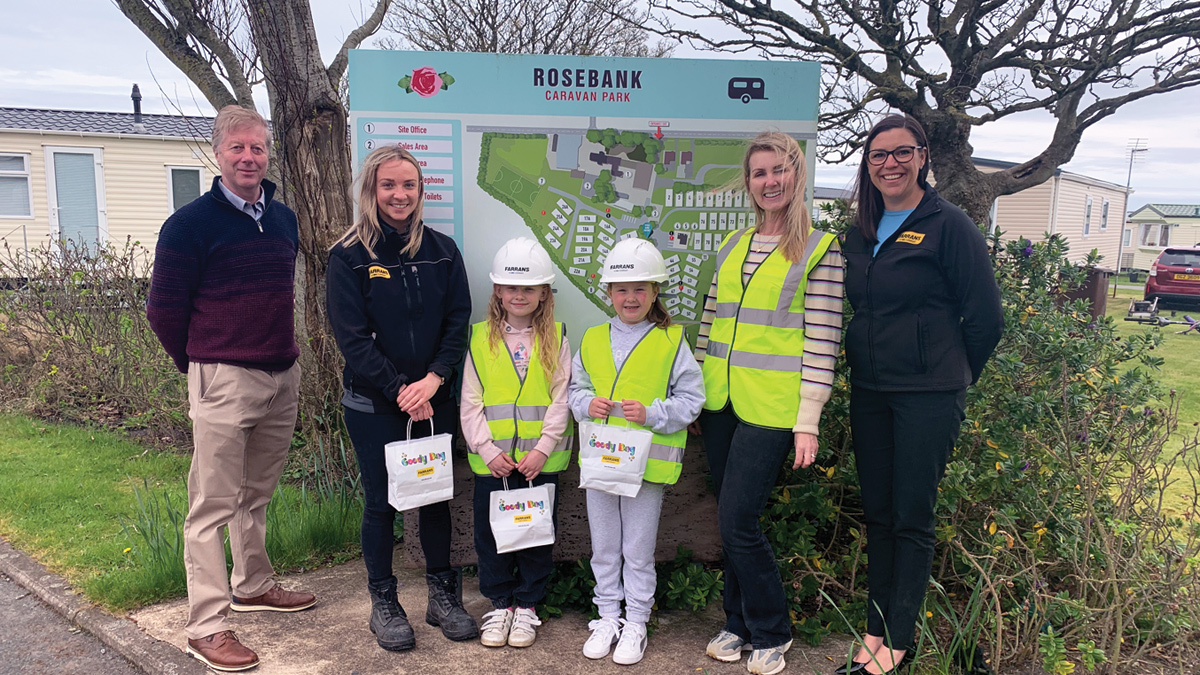
NI Water and Farrans held a joint safety initiative for children in caravan parks – Courtesy of NI Water
Successful delivery
The installation of the long sea outfall pipe was a complex and challenging element of the wider £18m Ards North Wastewater Improvement Project and required extensive planning, communications and collaboration with a wide range of stakeholders.
With a wealth of expertise and experience on board and as a result of meticulous planning, strong teamwork and robust health and safety measures, the new long sea outfall was successfully installed in summer 2022, well in advance of commissioning of the new WwTW in spring 2023.
This critical piece of infrastructure, along with the new Ards North WwTW and both new and upgraded pumping stations in the catchment, will support long-term economic growth in local development and tourism and will benefit all those living, working, visiting or investing in this scenic part of the Ards Peninsula.
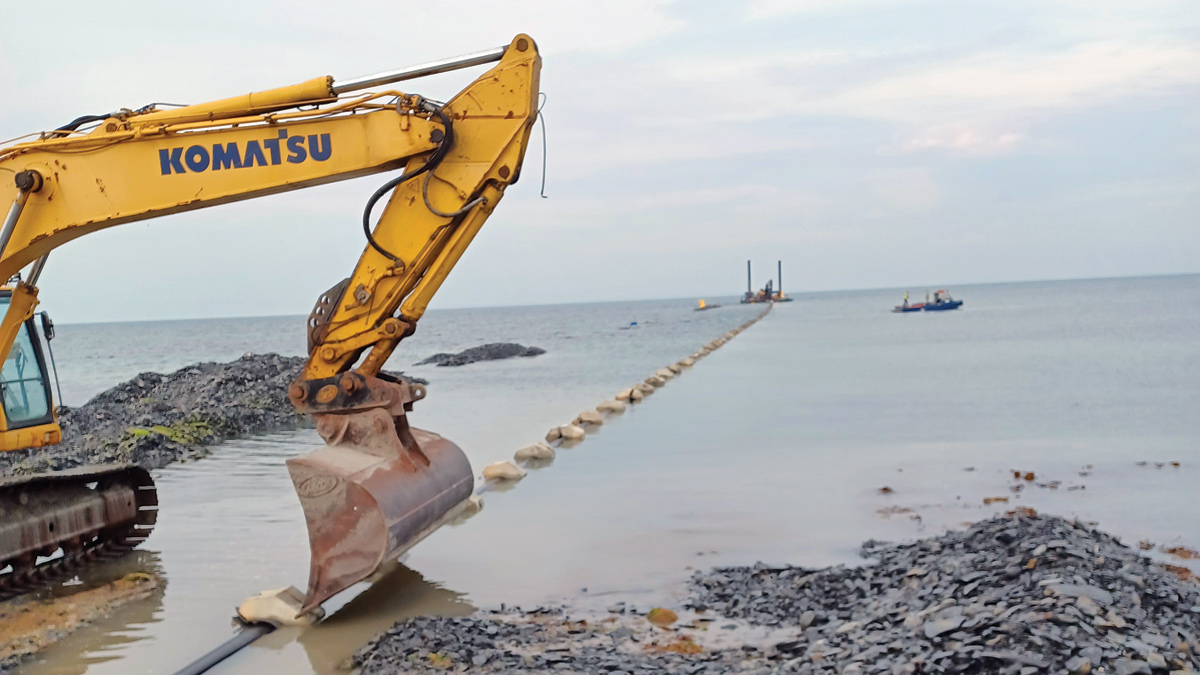
Installation of concrete kennels - Courtesy of NI Water



